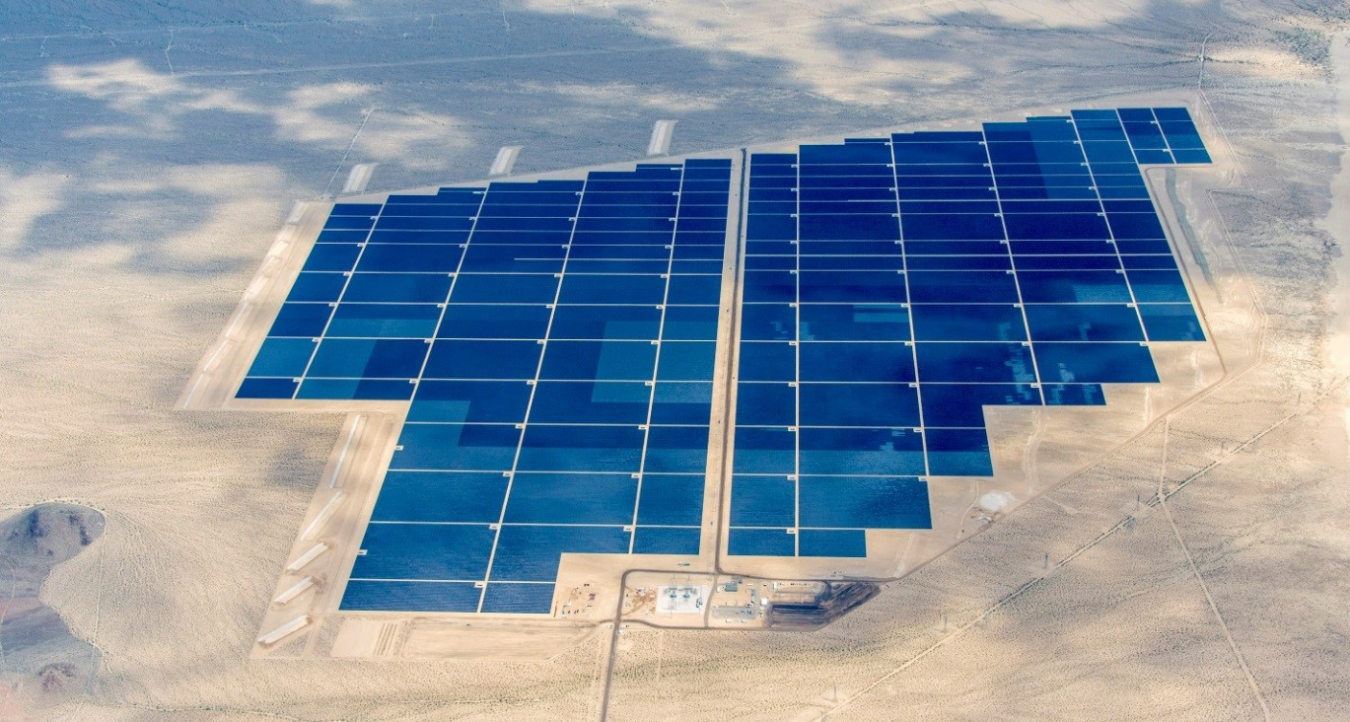Solar energy provides as much as 15% of generation on the grid in some states, solar energy can provide grid services to maintain system balance.
Solar Energy Technologies Office
May 17, 2018
When it comes to getting your power, a lot more work goes into it beyond generating electricity and transmitting it to customers. The U.S. electric grid requires constant monitoring and control to ensure customers have reliable access to power. Grid operators manage electricity supply and demand on the electric system by providing a range of “grid services”—which are activities grid operators perform to maintain system-wide balance and manage electricity transmission better.
Now that solar energy provides as much as 15% of generation on the grid in some states, research on solar energy’s ability to provide these grid services has new meaning for grid operators across the country. With more solar on the grid, balancing supply and demand can be tough when solar generation peaks during the day and drops when the sun goes down. Behind the scenes, grid operators must balance the generation and loads and quickly respond to grid disturbances to ensure that Americans can reliably access electricity 24/7.
Grid Services 101
Just like you need to do regular maintenance on a car to ensure that it runs smoothly, grid services help to maintain and improve the power flow and quality of electricity on the grid. They establish backup power options and map out major power loss recovery strategies, helping to maintain the safe delivery and use of electricity. From voltage and frequency control to generation reserve management and black start operations, these grid services ensure system-wide reliability.
Sometimes called “ancillary services,” these services have historically been performed by central generators and facilitate the basic operation of electricity generation, transmission, and distribution. Ancillary services are designed to absorb unpredictable load variations, support voltage and frequency regulation, and enable quick recovery from faults or outages in order to maintain system-wide reliability. Research developments supported by the U.S. Department of Energy Solar Energy Technologies Office at the national laboratories and the Power Electronics funding program could soon unlock new ways that solar can help contribute to the reliability and stability of the grid.
1. In Sync
One major service needed for the alternating current (AC) power grids in North America is voltage and frequency control. Frequency levels can change with the fluctuations in energy supply and demand but must be maintained within required limits to ensure the safe, reliable, and effective power flow. Without voltage and frequency regulation, customers could experience poor power quality and potential damages to electrical equipment.
With funding from the Energy Department solar office, the National Renewable Energy Laboratory worked with California Independent System Operator and First Solar to develop and validate a grid service testing plan that matches the grid service tests typically used to commission new, conventional generation plants. A key part of this testing involved the photovoltaic (PV) plant’s ability to accurately follow the frequency of other generators, called automatic generation control signals, to offset load fluctuations when power is quickly ramped up or down. Utilizing enhanced inverter controls, the advanced testing revealed that the new 300 megawatt PV plant was able to react quickly to load changes and had regulation accuracy that was nearly 30% higher than conventional generation plants, delivering system-wide benefits.
While testing continues, this project helps to unlock new grid service capabilities from large solar power plants.
2. On-Demand Power
When there are rapid swings in energy needs, utilities may need to use spinning reserves—energy that’s already online and synchronized to the grid’s frequency. This type of on-call, on-demand power must be easily accessed and ready to use within just a few minutes.
While solar PV and energy storage can be used to perform these services, concentrating solar thermal power plants can also provide similar benefits due to its thermal energy storage and use of a spinning turbine that adds inertia and stability to the grid. This power can then be used to respond to parts of the grid experiencing an unexpected outage or when solar generation ramps down in the evening hours.
3. Rebooting the Grid
After a major natural disaster or cyberattack causes a system-wide electricity outage, grid operators must safely reboot the entire system. This can be incredibly challenging and is largely a manual process for grid operators as they must maintain a fine balance between energy supply and demand; if there’s too much demand from customers or power ramps up too quickly, the entire system could shut down. Known as a “black start,” the ability to do a system-wide restoration of service is not a likely event but the ability to safely do it is critical for maintaining safe operation.
Through the Energy Department’s Grid Modernization Initiative, researchers at the Lawrence Livermore National Laboratory are exploring a restoration strategy that uses solar as the recovery source in order to enhance the resilience of the country’s distribution systems. To do this, researchers will study the feasibility of using distributed energy resources, like solar, to create a microgrid that self-configures and adapts in response to what it’s monitoring. This solution would leverage solar resources to bring other power sources back online during a black start, lowering costs and enabling reconnection times to go from days to hours.
As solar becomes a larger share of generation of the U.S. electricity mix, researchers are increasingly looking at the ways solar can provide the essential response and recovery efforts needed to maintain the grid. Solar and its new management tools are already showing great promise in the lab, and soon, grid operators could turn to solar as their first choice for responding to grid disturbances.
Learn more about the Solar Energy Technologies Office’s grid integration research and its participation in the Grid Modernization Initiative.
Guohui Yuan

Dr. Guohui Yuan is the program manager for the systems integration (SI) subprogram within the Solar Energy Technologies Office (SETO). His team supports research, development, and demonstration of technologies and solutions to enable the widespread deployment of solar energy on the nation’s electricity grid.
Dr. Yuan has been supporting SETO as a technical advisor since 2011. Previously, he held several key positions at industry-leading clean technology startups, including CURRENT Group, GridPoint, and WaveCrest Labs. Early in his career, he worked at COMSAT Labs as a systems scientist. He is a recognized thought leader and has many technical publications. He holds nine patents.
He holds a B.S. degree from Tsinghua University, Beijing, China and a Ph.D. from the University of Maryland, College Park, both in physics.


